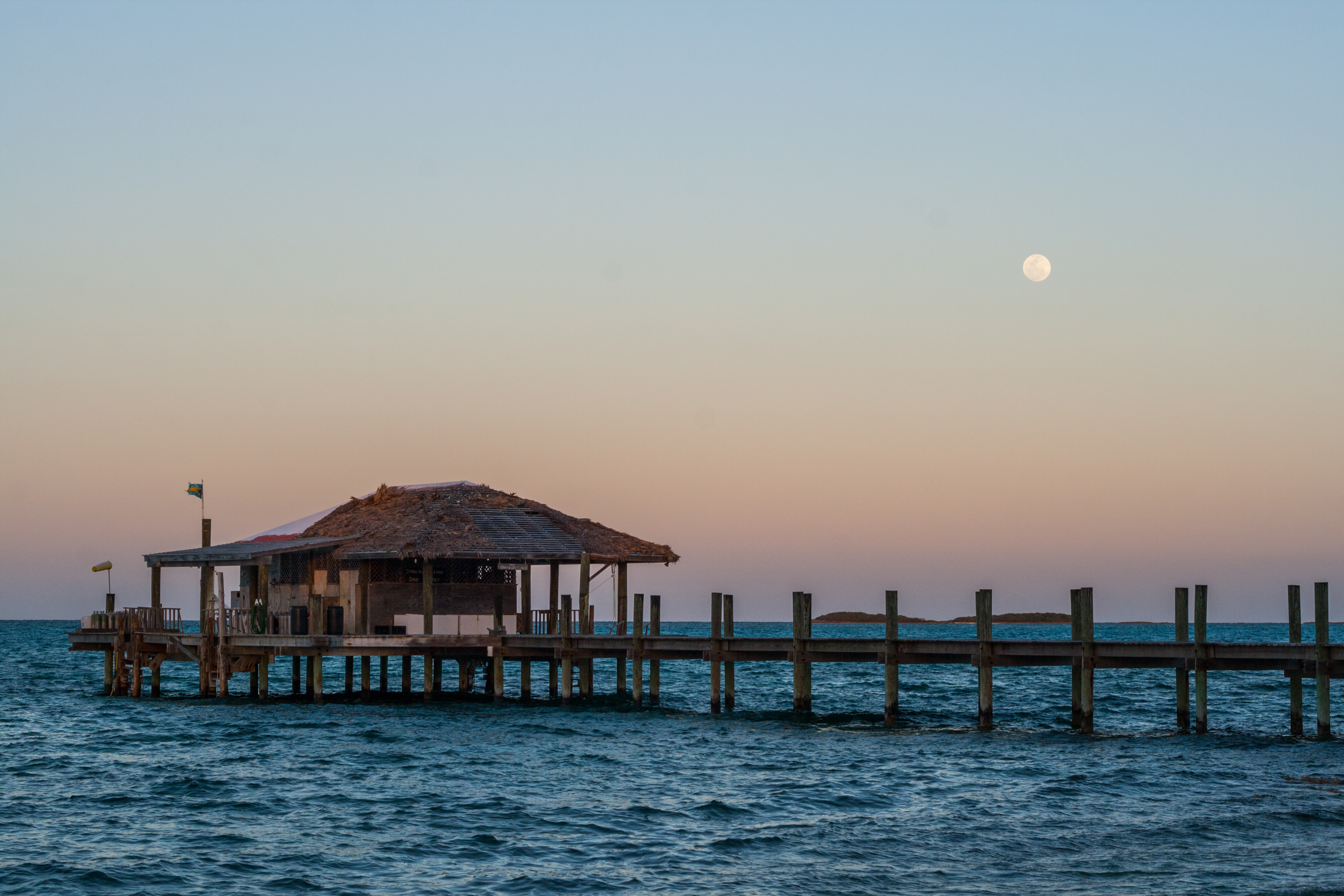
Day 1: I woke up at 3:29 a.m., the minute before my alarm was set to go off. Everything was already packed, so I walked in the night’s chill to Lewis Library, where a bus took us to Newark International Airport. The red-eye flight to Fort Lauderdale blinked by, and after stretching our legs and filling out the entry forms, the 16 of us piled into three charter planes bound for Andros International Airport, a glorified landing strip in The Bahamas. Vans picked us up at the terminal and brought us over bumpy roads to Small Hope Bay Lodge. Our first two nights were to be spent there, apparently some of the only lodging on the island, which, as luck would have it, was sumptuous: The staff threatened to punish us if they caught us “working” at all on the premises. Taking the threats seriously, we avoided all work by hanging out in the hot tub and playing sunset rounds of Cards Against Humanity.

Day 2: At 5:30 the next morning, however, any semblance of a “traditional” Bahamas experience evaporated as we embarked on our first excursion of the week. At this point blissfully free of sunburn and blisters, we cruised northward on the postcard-blue Bahamian waters, bound for Joulter’s Cays. Here, we had our first introduction to the geological history of the island, which we pieced together from lithified sand dunes. During the last Ice Age, so much water was frozen in ice sheets that sea level was 120 meters lower than today. Vast expanses of the Caribbean were exposed and dried, and winds blew the uncovered sand into massive sand dunes. These dunes piled up so high that when the ice melted, their peaks stayed dry, forming the island paradise we know today.

Day 3: This morning also began in a boat, but this time our destination was the barren tidal flats on the northwestern side of Andros, where we would camp and research for the next four days. By lunchtime, we had our tents pitched beside a tiny pine grove, the only spot for miles above the high tide mark, surrounded by the sweltering tidal flats of Triple Goose Creek. Apparently in the 1970s, this locale was a waypoint along the drug trade, with planes flying from South America to drop their merchandise to “fishermen” below, waiting in the clear, blue water. This week, it would just be us, however, and an afternoon tour of the channels and marshes provided us with the context for our three days of fieldwork. By dinnertime, I had also been introduced to the massive and terribly gregarious biting flies, which were able to attach themselves to my legs and draw blood with painful pricks. Despite the profuse sunburn and multiple fly puncture wounds, sheer exhaustion carried me into deep, sound sleep.

Day 4: The first day of fieldwork. We had been split into four teams, and my team was originally supposed to trek and swim to an inland marsh. The marsh in question, however, was 4 km of mud, channels, and mangrove outcrops away from our campsite, which, with equipment, would have taken hours simply to reach and return from our destination. So as a team, we created a different project, deciding to work on figuring out how the bedrock varied beneath all of the mud above it. Ultimately, this involved probing the ground hundreds of times with two- to three-meter-long metal rods and measuring the depth to which the rods penetrated. Right after lunch, however, just as we were getting the hang of our probing techniques, a wall of ominous storm clouds passed the beach. In their wake, we could see the tide, which had been coming up for hours, creeping up along the grasses, headed right toward our tents...
to be continued...






